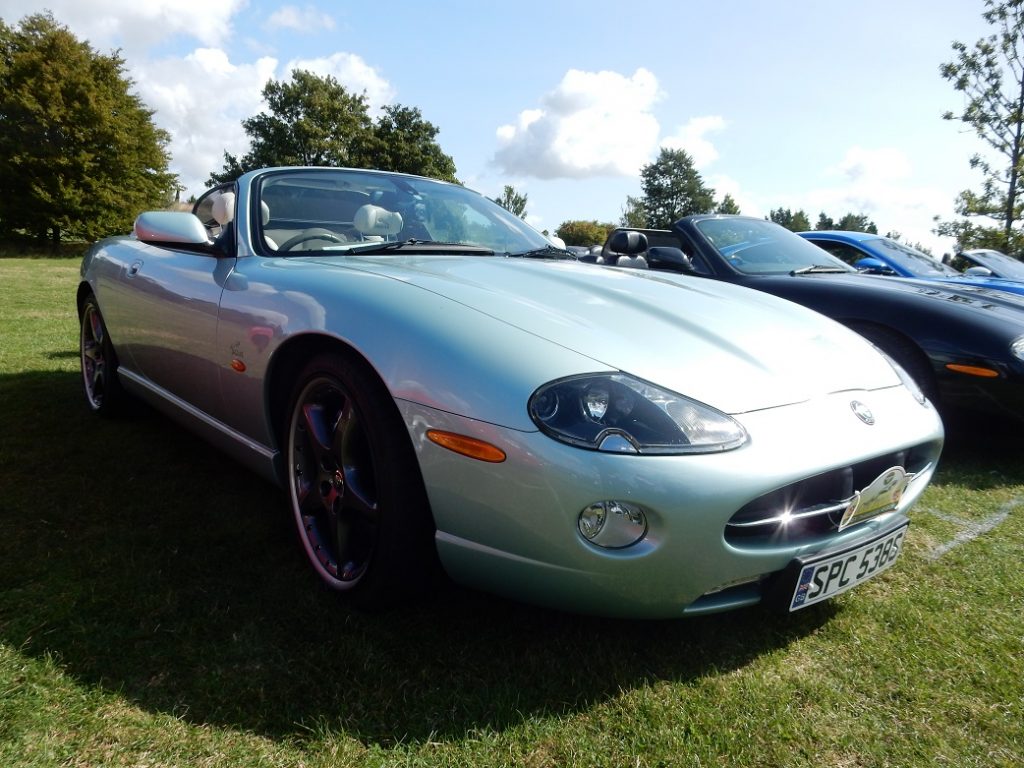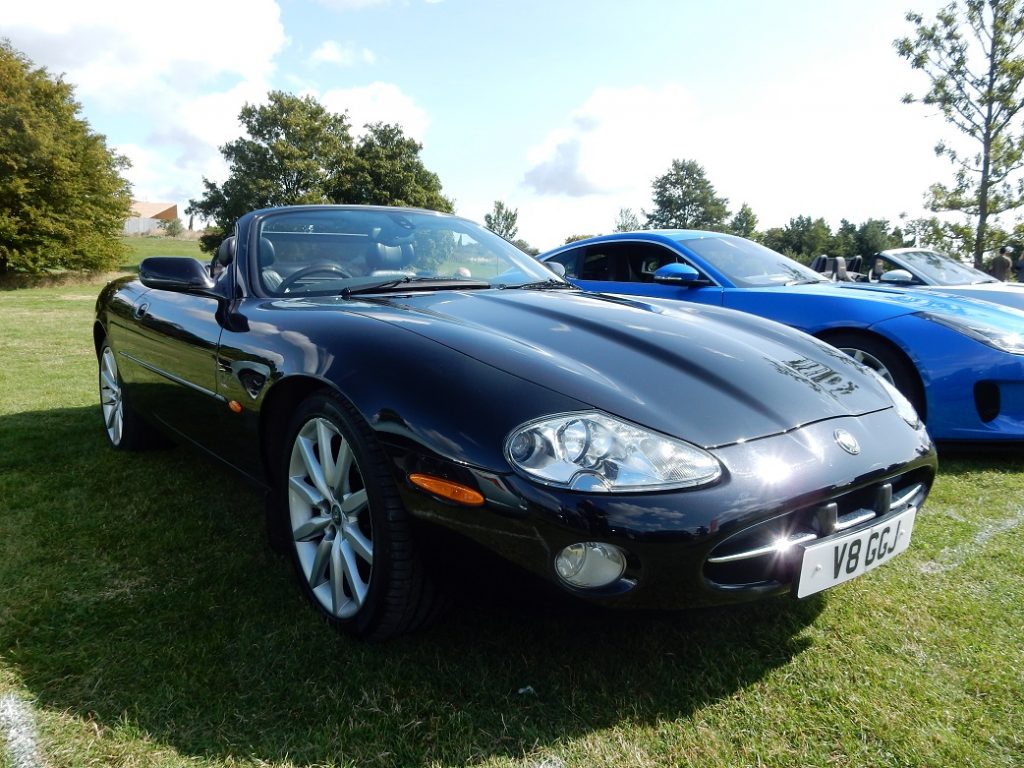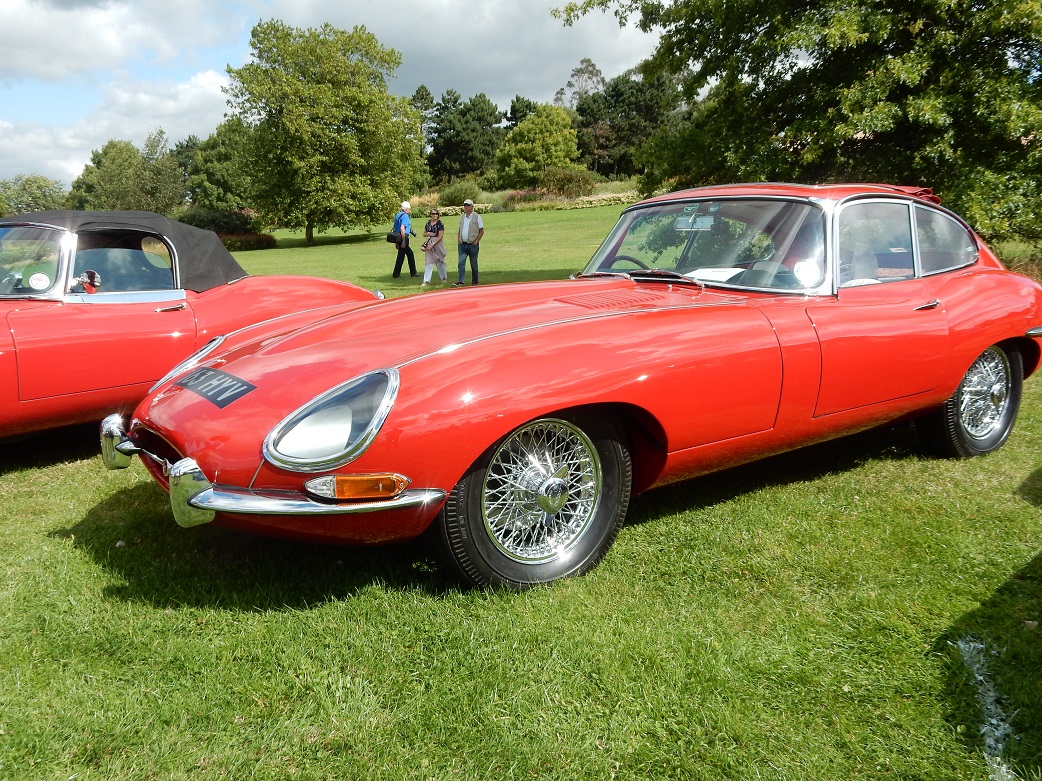On Sunday 20th August, JEC Essex Thameside Region joined the JDC Area 33 and other car clubs for a show at Hyde Hall. Over 200 cars attended from Mercedes, Morgan, TR, Jaguar, Singer, Austin 7 & Porsche car clubs. The weather was great for the whole day which brought out the visitors to the gardens and the show. Approximately 2,970 persons visited on the day (about a 1000 up on normal day) plus 75 new RHS memberships were gained. This was greatly appreciated by RHS who wish us to make it an annual event. Discussions are already beginning as to the date for 2018.
Essex Thameside fielded 34 Jaguars from our membership and it was an impressive display.
The story of RHS Garden Hyde Hall
In 1955 when Dr and Mrs Robinson came to Hyde Hall there were only six trees on the top of a windswept hill and no garden. If they had known then what they soon learned, it is very doubtful that the garden would have been made. The site was cold and windy, the top of the hill was covered in gravel and the soil on the slopes comprised a sticky clay with a pH of around neutral.
For centuries Hyde Hall had been a working farm and the area around the house was a dumping ground for all kinds of rubbish. Mrs Robinson started to garden as a reaction against this and as she cleared areas
around the house they were planted with anything available. In this way she created herbaceous borders and a vegetable garden close to the house, and established the framework of the garden with some 60 young trees bought at an auction sale in Wickford Market.
The house, which dates back to the 18th century, is a typical Essex farmhouse of timber frame, lath and plaster. Records show the existence of a dwelling on this site at least as far back as Tudor times. At the
back of the house Mrs Robinson discovered the Tudor brick floor of an old stable under a pile of old household rubbish and soil. This was excavated to become a natural pavement garden.
Cleaning the land around the house was arduous and time-consuming work but, with some assistance from the pigs, the refuse, brambles and scrub were eventually removed and the sticky, clay soil improved
with quantities of animal manure and mushroom and bark compost.
Since the Robinsons turned the first spadeful of clay in the 1950s, Hyde Hall has always been a dynamic garden, constantly changing to meet the various challenges the site and soil have produced. The story of the development of this inspiring garden with its extraordinary diversity of plants is a fascinating one, a triumph over conditions that would have daunted less keen and dedicated gardeners.
The Hyde Hall Gardens Trust was set up in 1976 and then in 1993 the garden became the responsibility of the Royal Horticultural Society, having been bequeathed by the Trust to ensure its future survival. Under ownership of the RHS a number of modifications were made to accommodate growing visitor numbers.
One of the first major garden projects was the installation of a 45-million litre (10 million gallon) reservoir to provide the garden with all its irrigation needs. To further promote its water-efficient ethos a
Mediterranean-styled Dry Garden was added to showcase a range of drought-tolerant plants. The Dry Garden was completed in the spring of 2001, following one of the wettest winters known.
A major turning point came in 2008 with the construction of a visitor centre comprising a café, shop and plant centre. The building was officially opened in March 2010 by Alan Titchmarsh. Work at this Essex garden continues at a monumental pace and the ever-changing landscape ensures visitors have plenty to draw inspiration from. Forthcoming projects include a new Winter Garden, Global Vegetable Garden and Big Sky Meadows.
So returning to the show, we had a marvellous day as can be seen with the accompanying photos.

































